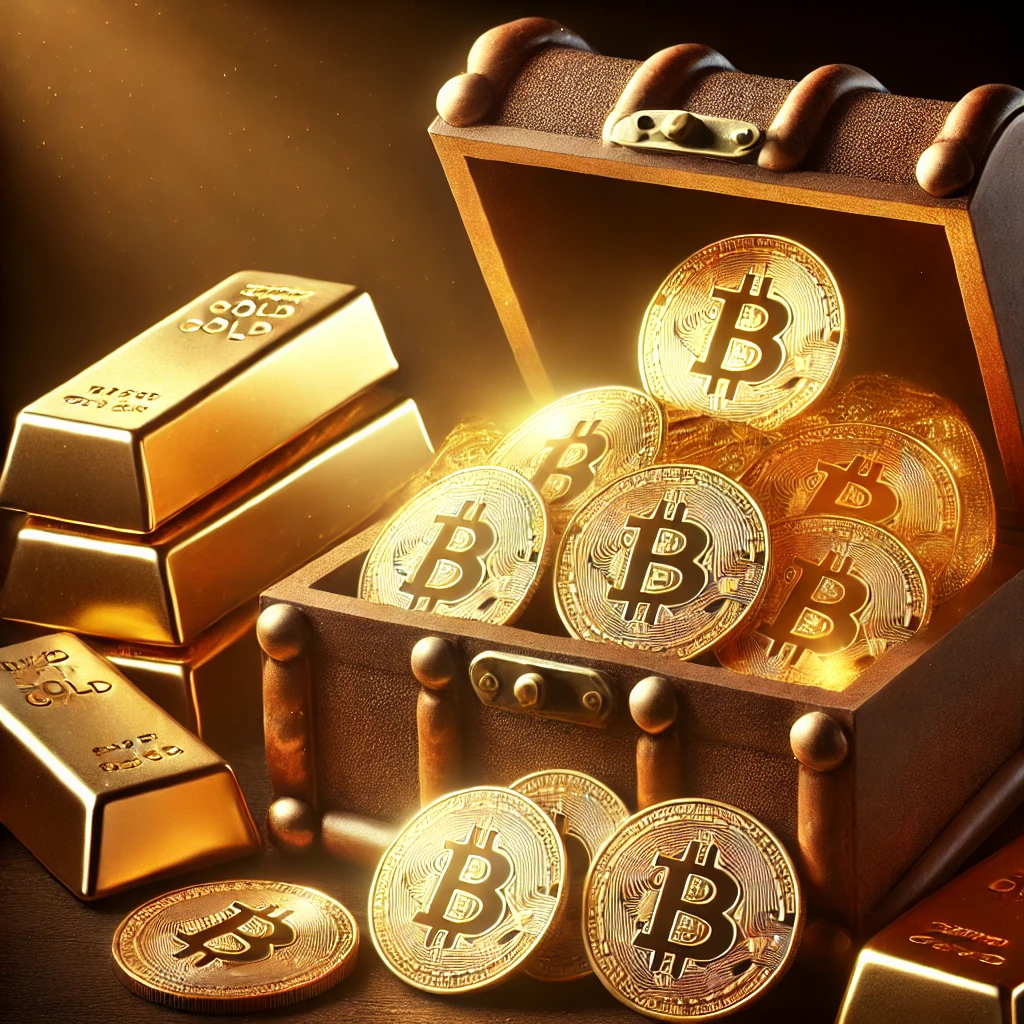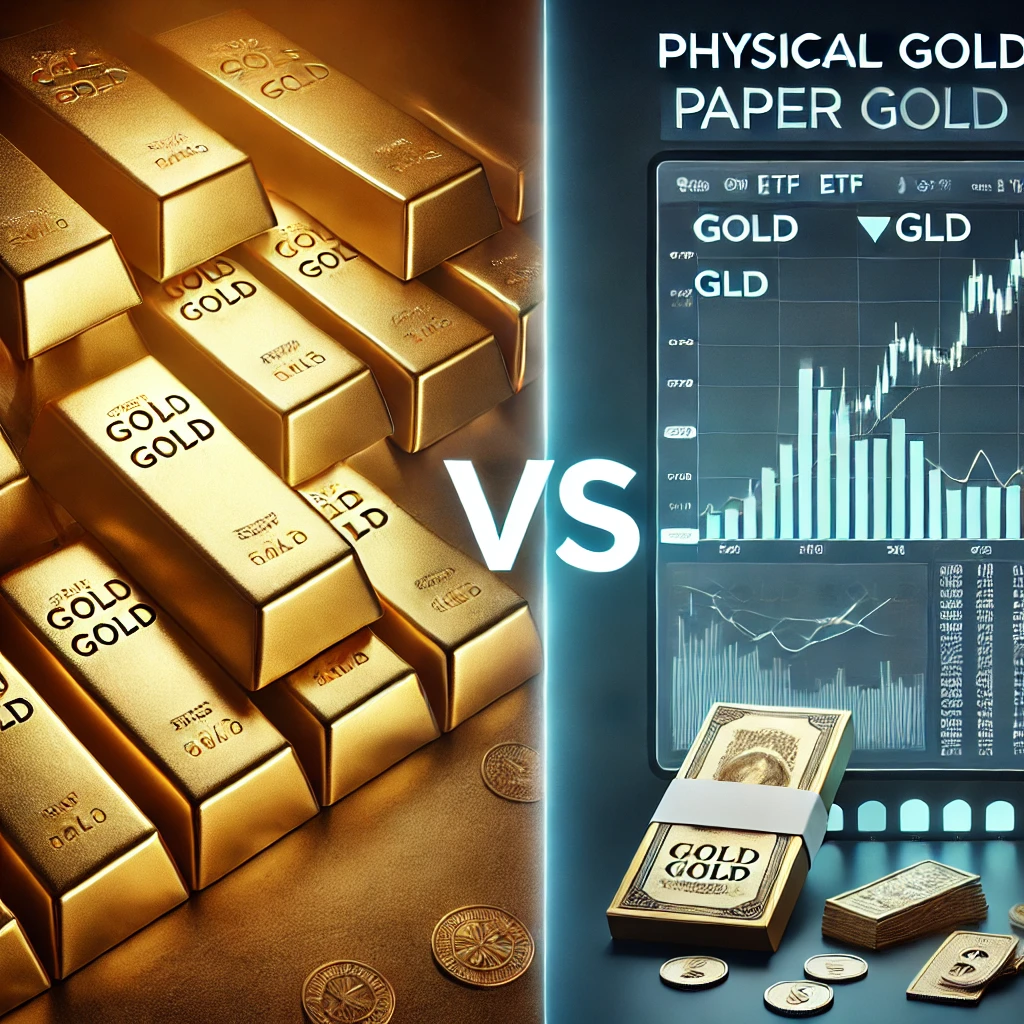When it comes to investing, few assets have stood the test of time like gold. More recently, Bitcoin has emerged as a digital alternative, drawing comparisons to the precious metal. Both serve as stores of value, hedges against inflation, and protection against economic uncertainty. But what makes them worth your attention? Let’s break it down.
Gold: A Time-Tested Safe Haven for Investors
Gold has been a reliable store of value for centuries. Unlike paper money, it isn’t controlled by governments or central banks, and its scarcity makes it highly sought after. It has historically retained its value, especially during economic downturns. While stock markets fluctuate, gold often provides a cushion against volatility. During inflationary periods, gold tends to appreciate, making it a reliable hedge for preserving wealth.
Another advantage of gold is its tangibility. As a physical asset, it can be stored securely and is immune to cyber threats. Unlike digital investments, it has intrinsic value, recognized globally. Additionally, gold plays an essential role in portfolio diversification. It often moves inversely to stock markets, helping to balance out investment risk and stabilize financial holdings.
Recent Trends in Physical Gold Acquisition
In recent months, there has been a notable increase in the movement of physical gold into the United States. Financial institutions have been transferring significant quantities of gold from London to New York, driven by concerns over potential U.S. tariffs on precious metals. For instance, JPMorgan Chase & Co. delivered gold bullion valued at over $4 billion against futures contracts in New York in early 2025. (Mining.com)
This surge in gold transfers has led to a substantial rise in COMEX gold inventories, with stockpiles swelling by more than 20 million ounces since late 2024. (Bloomberg) Such movements underscore the growing demand for physical gold as a hedge against geopolitical and economic uncertainties.
Concerns Over Gold Reserves and Auditing
The transparency of national gold reserves has come under scrutiny, particularly regarding the U.S. Bullion Depository at Fort Knox. The last comprehensive audit of Fort Knox occurred in 1953, leading to decades of speculation and conspiracy theories about the actual contents of its vaults. (Mining.com)
Prominent figures, including former President Donald Trump and entrepreneur Elon Musk, have publicly questioned the security and transparency of these reserves, amplifying calls for a thorough audit. (Economic Times) Such concerns have prompted some investors to redeem their physical gold holdings, further driving up demand and prices.
Bitcoin: The Digital Gold Revolution
Bitcoin shares several qualities with gold but introduces a modern and digital twist. One of its most compelling features is its fixed supply—only 21 million bitcoins will ever exist. This scarcity ensures that Bitcoin remains deflationary, potentially increasing its value over time. Unlike traditional currencies that can be printed in excess, Bitcoin’s supply is algorithmically controlled, making it an attractive alternative to fiat money.
Decentralization is another key strength of Bitcoin. It is not controlled by any government or institution, and its transactions are secured through blockchain technology. This transparency and security make Bitcoin a trustworthy financial asset. Despite its volatility, Bitcoin has demonstrated impressive growth over the past decade, attracting long-term investors seeking high returns.
Additionally, Bitcoin is highly liquid and accessible. Unlike gold, which requires physical storage and security, Bitcoin can be transferred across borders in minutes. This makes it a flexible asset in today’s increasingly digital economy.
Implications for Bitcoin Amid Gold Reserve Concerns
The uncertainties surrounding physical gold reserves and the challenges of auditing and transferring tangible assets have highlighted the advantages of digital assets like Bitcoin. Bitcoin’s transparent blockchain ledger allows for real-time verification of holdings, eliminating the need for physical audits. This inherent transparency and ease of transferability make Bitcoin an attractive option for investors seeking a secure and efficient store of value.
As concerns about the integrity of gold reserves persist, more investors may turn to Bitcoin as a viable alternative, potentially driving increased adoption and value appreciation.
Why a Balanced Approach to Bitcoin and Gold Works Best
Instead of choosing between Bitcoin and gold, a diversified strategy that includes both can provide optimal results. Gold offers historical stability, while Bitcoin introduces technological innovation and significant growth potential. Together, they create a hedge against inflation, financial instability, and currency devaluation. By incorporating both into an investment portfolio, investors can mitigate risk while capitalizing on modern financial advancements.
Frequently Asked Questions (FAQ)
Is Bitcoin more volatile than gold?
Yes, Bitcoin is significantly more volatile than gold. While gold has a long history of price stability, Bitcoin experiences frequent fluctuations. However, its volatility also presents opportunities for high returns.
Which is a better hedge against inflation?
Both Bitcoin and gold serve as effective hedges against inflation, but in different ways. Gold has been a traditional safeguard for centuries, while Bitcoin’s fixed supply makes it an emerging digital alternative.
Can Bitcoin replace gold?
Bitcoin is often referred to as “digital gold,” but it does not completely replace gold. While both share characteristics of scarcity and value retention, gold is a physical asset with centuries of proven stability, whereas Bitcoin offers modern digital benefits.
Where can I buy Bitcoin and gold?
Bitcoin can be purchased on cryptocurrency exchanges like Coinbase and Binance. Gold can be bought through trusted stores and online dealers like APMEX or JM Bullion, as well as through financial institutions and investment funds.
How should I store Bitcoin and gold?
Gold should be stored in a secure location, such as a safe deposit box or a private vault. Bitcoin is stored in digital wallets, either online (hot wallets) or offline (cold wallets), to protect against cyber threats.
Both Bitcoin and Gold as Investment
Gold has been a trusted store of value for centuries, while Bitcoin represents the future of digital assets. Each has its own strengths, and combining them can help investors navigate an unpredictable financial landscape. If you’re serious about protecting and growing your wealth, taking a deeper dive into both assets could be a smart move.
By including both Bitcoin and gold in your investment portfolio, you gain the benefits of traditional stability and modern digital advancements, ensuring a well-rounded approach to financial security and wealth preservation.

